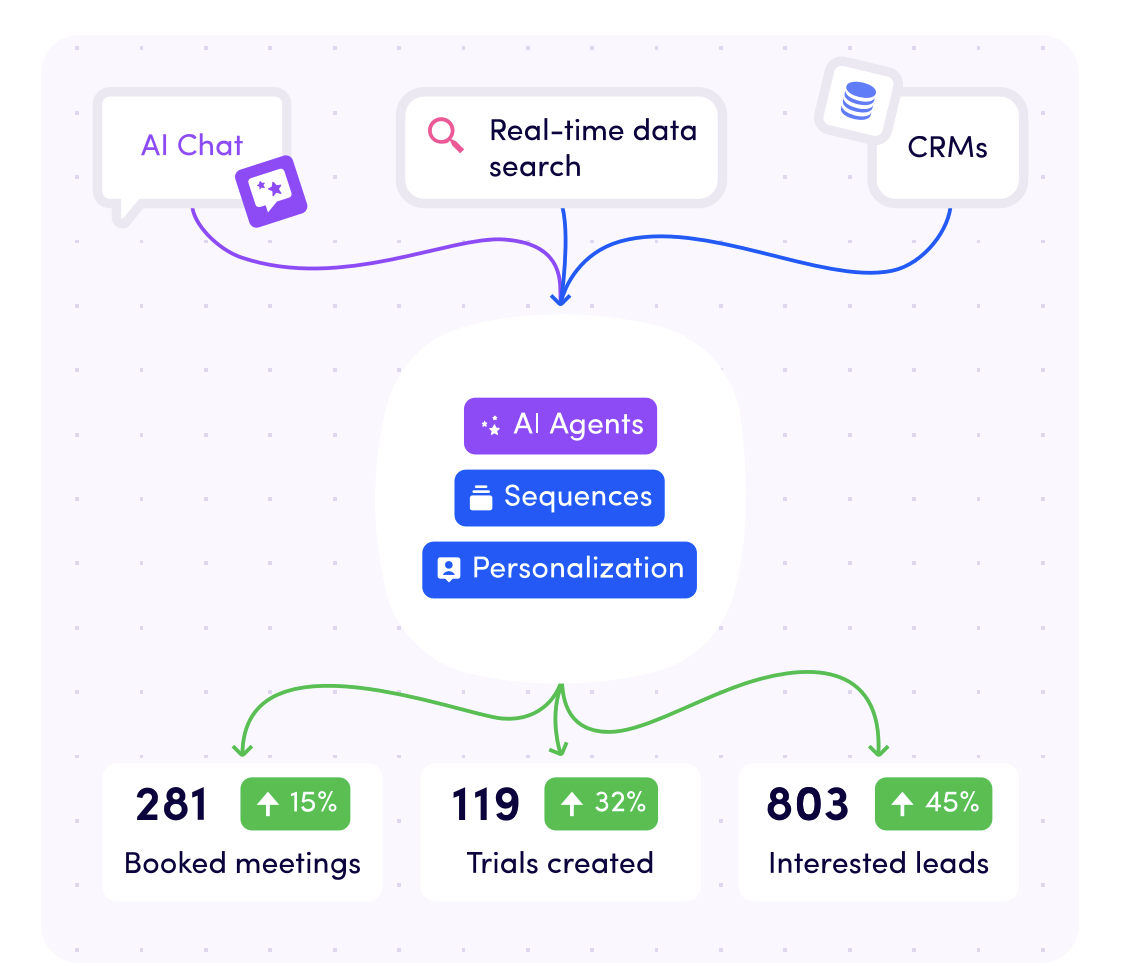How to implement a digital transformation strategy

In today’s fast-paced, tech-heavy market it's important to constantly evolve your business. Unfortunately, 70% of companies fail to adapt to these new technologies. A clear digital transformation is your key to thrive.
In a world buzzing with the promises of technology, digital transformation stands out as the superhero response to the chaos of tech disruptions on businesses worldwide.
It's not just a strategy anymore; it's the survival manual in our tech-driven age.
The pandemic shook things up, and 60% of companies realised investing in digital transformation wasn't an option but a lifeline for resilience.
You can jump to a section using the table of contents below:
What is digital transformation?
Don't let the term intimidate you!
Digital transformation is about upgrading your business game using the latest digital tools to make your processes smoother than a well-oiled machine.
Think of it this way: adopting emerging technologies to jazz up your business processes is like adding cool gadgets to your superhero utility belt.
And remember, a digital transformation project should be fun! 🎉
Want to be a digital transformation hero? Here are some ways:
- Swap out manual tasks for automation – because who has time for repetitive stuff?
- Bring in a new collaboration tool – teamwork makes the dream work.-
- Harness low code technology for custom apps, bridging the gap between IT and business users.
- Dive into the wonders of data analytics and AI for making smart decisions at warp speed.
- Create digitally empowering products and services – think of them as your sidekicks in the business world.
As diverse as these strategies sound, that's the beauty of digital transformation – it's a bespoke suit, tailored to fit your business goals.
Remember, it's not a one-size-fits-all scenario. Pick and choose based on your business objectives.
Whether you're a tech-savvy startup or a seasoned corporation, there's a digital upgrade waiting for you.
And it's not just about surviving; it's about thriving and gaining that competitive edge.
So, in the grand scheme of things, digital transformation is a mindset shift.
It's about revamping processes, engaging customers, supporting your team, and, of course, boosting your bottom line.
As we hurtle into the digital future, led by AI and immersive technologies, it's not just about keeping up – it's about leading the pack.
Embrace the change, adapt, and watch your business transform into a digital powerhouse.

(image source: Smartway)
Why does digital transformation matter?
Back in the day, the commercial internet kicked things off, and as we rolled into the 21st century, high-speed bandwidth and mobile tech took the reins, turning in-person, face-to-face interactions into seamless online transactions.
Today, we're experiencing a new great digital disruption with the rise of Artificial Intelligence.
Digital transformation isn't a luxury; it's a necessity for those aiming not just to survive but to thrive in the digital age.
Amazon, with its disruptive business model, became the symbol of the digitalization revolution, showing that those who failed to embrace modern technologies risked falling by the wayside. Today, businesses must continually re-engineer their processes as technology evolves to remain relevant and profitable.
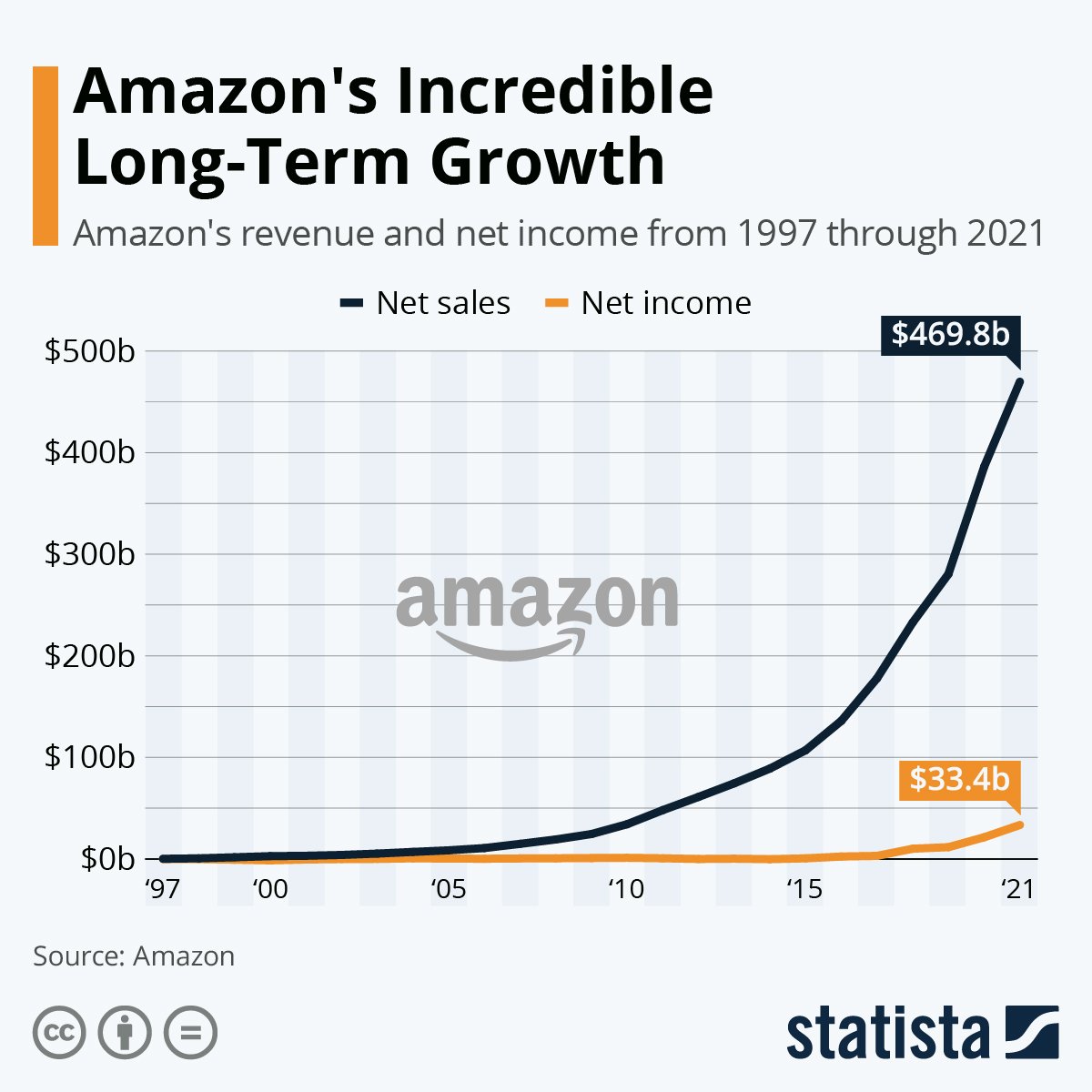
(image source: statista)
On the other hand, we've also seen businesses fail as they were ignorant towards new digital technologies.
MySpace
Back in 2008, MySpace was considered the most innovative social networking hub available. In the glory days, the site was pulling a staggering 75.9 million unique visitors every month.
However, as innovation faded into the rearview, Myspace's once-unshakeable foundation began to crack.
Facebook entered the space with a service so superior and user-friendly that it made Myspace seem like yesterday's news. Supporting cool features, including the now-iconic Facebook newsfeed, it not only stole the spotlight but also revolutionised communication and networking for its members.
The winds of change had blown, and Facebook emerged as the new ruler of the social media realm.
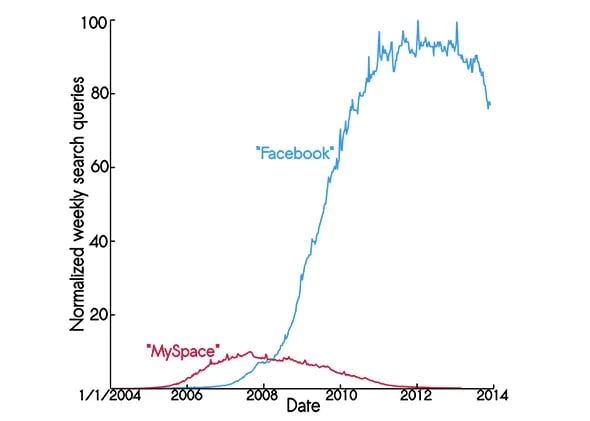
(image source: Andreana Apostolopoulos)
Borders Group
The rise of the online era has reshaped the bookstore landscape, led by giants like Amazon, chipping away at the foundations of brick-and-mortar stores.
The advent of e-reading devices, such as Kindle and mobile gadgets, further accelerated the decline in physical book sales.
In this digital upheaval, the Borders Group, a prominent player in the bookstore business, failed to ride the wave of change.
As consumers, especially the digitally adept younger crowd, shifted from physical to online purchases, companies made strategic cuts to their music and DVD sections. However, Borders lagged in responding to this shift.
The final chapter for Borders unfolded in 2011 when it filed for bankruptcy, becoming a casualty of the fast-paced transformation in the way people consume books and entertainment.

(Image source: TheOrangeCountyRegister)
Here are a few more examples of businesses that failed to keep up.
Let's continue with your digital transformation project!
What is possible with digital transformation?
It's not about asking, "How much faster can we do things the same way?"
It's about posing the more profound question, "What is our technology capable of, and how can we adapt our business and processes to make the most of our technology investments?"
Before the era of Netflix, choosing a movie meant venturing into stores, scanning through shelves of tapes and discs, and hoping to stumble upon something appealing.
Fast forward to today, and libraries of digital content are at our fingertips, served up on personal devices with personalized recommendations and reviews tailored to user preferences.
Netflix didn't just disrupt the brick-and-mortar video rental business by streaming subscription-based content directly to people's TVs, computers, and mobile devices; it sparked a digital revolution, changing customer expectations for all businesses.
Netflix further dove into the possibilities of available technology, giving birth to innovations like a content recommendation system powered by artificial intelligence.

(Image source: ThePowerBusinessSchool)
Now, that's how you make the most out of your IT department!
The potential goes beyond just new digital technologies. It's about reimagining entire business models for a better customer experience.
Here are some examples:
-
Data-Driven Decision Making: Digital transformation empowers businesses to leverage real-time data analytics, turning raw data into actionable insights. It's not just about collecting data; it's about extracting meaningful information that fuels strategic decision-making.
-
Customer-Centric Experiences: Beyond Netflix-style personalisation, digital transformation allows businesses to create hyper-personalized customer experiences resulting in higher customer satisfaction scores.
-
Agile Work Environments: Digital transformation enables organizations to create flexible work environments, breaking free from traditional structures and embracing cost-saving collaborative, dynamic workflows.
-
Innovative Products and Services: Like Netflix exploring AI-driven recommendations, digital transformation opens the door to innovation, such as disruptive technologies.
What role does culture play in digital transformation?
In the grand symphony of a digital transformation journey, the role of culture is not just a mere player; it's the conductor shaping the harmonies of success.
The connection between culture and the implementation of digital initiatives runs deep, influencing attitudes, behaviours, and actions within an organization.
Let's dive into the profound relationship between culture and the success of digital transformation. 👇
Alignment and Vision
Culture serves as the compass aligning digital initiatives with organizational strategy. It creates a shared purpose and understanding, paving the way for successful implementation.
An organizational culture embracing the digital future is the bedrock upon which success is built.
It's important to break down silos that often hinder progress. It fosters cross-functional collaboration in digital initiatives, creating an environment where open communication and trust seamlessly integrate technologies and processes.
The Growth mindset
A culture that promotes calculated risk-taking and provides psychological safety becomes the breeding ground for innovation. Empowered employees feel the freedom to explore novel solutions, contributing to the success of new initiatives.
A growth mindset becomes the cornerstone of continuous improvement. In this culture, employees acquire new skills, stay updated, and effortlessly adapt to the changing digital landscape, ensuring the success of implementation.
We know this is not an easy task!
Transforming a company's mindset may be time-consuming, especially for those deeply rooted in traditional practices. Yet, fundamental principles can expedite these efforts.
👉 We've designed this 4-step process to develop a growth mindset.
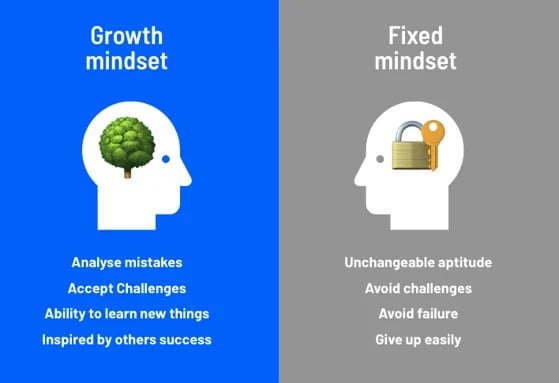
Principles of Digital Transformation Culture
Digital transformation demands more than just technological shifts; it requires a fundamental transformation of organizational culture, mindset, and processes.
Entrepreneurs should aim for an inclusive culture in the digital workspace, embracing visionary leadership, agility, collaboration, learning and development, customer-centricity, and change management.
Digital transformation roles and skills
In the dynamic landscape of digital transformation initiatives, the right skills are the compass guiding organizations through the sea of change.
Let's explore the roles and skills essential for orchestrating a successful digital transformation:
In the grand orchestra of digital transformation, specific roles take centre stage:
-
Software Engineers, Cloud Computing Specialists, and Digital Product Managers: These roles remain pivotal for companies rolling out new products and services.
-
DevOps Leaders: The conductors of software development, merging operations with development to facilitate continuous iteration and speedy delivery.
-
Data Scientists and Data Architects: In high demand for gleaning insights from vast data troves, as transformations increasingly rely on machine learning and artificial intelligence.
-
UX Designers, Digital Trainers, Writers, Conversational Brand Strategists, Forensic Analysts, Ethics Compliance Managers, and Workplace Technology Managers: The diverse talent priorities that complete the ensemble.
-
Chief Digital Officer (CDO): Leadership matters, and the CDO plays a crucial role in steering the digital imperative.
McKinsey covers six of the most important capabilities in their book Rewired.
- The ability to craft a clear strategy focused on business value.
- A strong talent bench with in-house engineers.
- An operating model that can scale.
- Distributed technology that allows teams to innovate independently.
- Access to data that teams can use as needed.
- Strong adoption and change management.
What does a digital transformation framework look like?
It's time to get our hands dirty! 🔥
As a leader introducing a digital transformation initiative, it's important to follow a structured change process.
To make an effective change, you'd need to
- Define your vision.
- Create urgency.
- Get other leaders involved.
- Communicate the change vision.
- Remove barriers to action.
- Accomplish short-term wins.
- Build on the change.
- Make those changes stick!
All of these steps are captured in the 8-step change model by John Kotter.
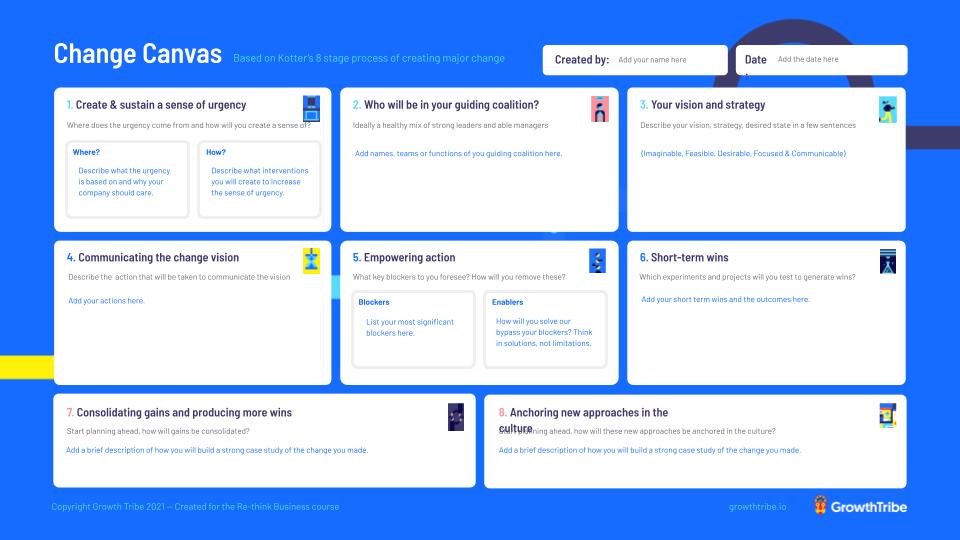
👉 Request a copy of the 8-step change model Canvas here.
Let's take a further look at this 8-step change model.
1. Create urgency
As with everything, your digital transformation strategy starts with some urgency!
Imagine this step as the energetic drumroll before the grand entrance of your favourite rock band. It's about setting the stage for change, not with a timid whisper, but with a roaring declaration that change isn't just a good idea; it's the next big adventure.
Firstly, we're not going to throw a bunch of dull statistics at your team like a boring accountant's spreadsheet.
No, we're going to craft an engaging narrative that makes everyone nod their heads and say, "Yep, it's time for a change."
Important note: Kotter suggests that for change to be successful, 75% of a company's management needs to "buy into" the change. So, make sure to nail this step of the process!
2. Get leaders involved
Seek out leaders across your organisation, not just those with fancy titles.
Build a change coalition with diverse powers – from job titles to expertise.
Once your coalition is in place, make them a powerhouse team. Get them emotionally committed, foster team spirit, and address any weak links. Mix and match from different departments and levels.
This isn't about hierarchy; it's about a united front driving urgency and momentum for change.
Let's make digital transformation not just a buzzword but a reality that powers your success.
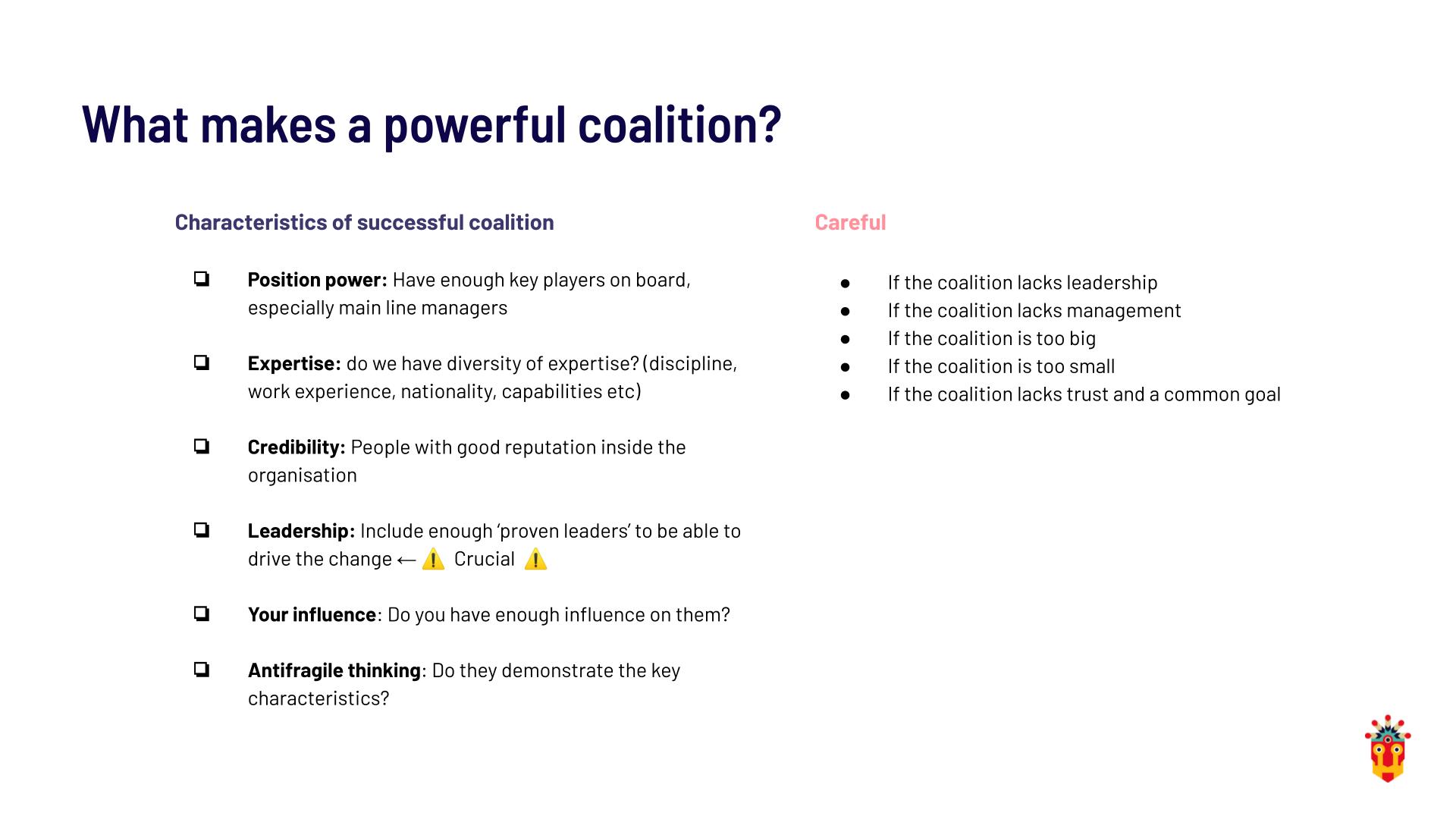
3. Define your vision
Perfect, now that you've defined your vision for your digital transformation initiative, it's time to create some proper urgency!
It's your goal to build a clear vision for the digital transformation initiative and plan effective strategies, team members need to understand what success will look like in the end.
To master this step of the change strategy, your vision needs to be imaginable, feasible, desirable, focused & communicable.
.jpg?width=1920&height=1080&name=Module%206%20%E2%80%94%20Managing%20Change%20%E2%80%94%20Official%20%E2%9C%85%20(1).jpg)
4. Communicating the change vision
Now that we've sculpted our vision, it's time to turn up the volume and let the rhythm of change resonate through every corner of your company.
Picture this as the grand concert where your vision takes centre stage, and everyone is not just listening but dancing to the same beat.
The goal here?
Win hearts and minds. Imagine rallying the troops not just with words, but with a contagious energy that sparks a wildfire of enthusiasm.
You're not just selling a vision; you're creating believers.
Talk about your vision like you're telling the best story of your life.
Don't just schedule meetings; make every interaction a platform to amplify the vision. It's not a one-time show; it's a continuous tour where the hits keep coming.
And remember, actions speak louder than words. Be the living embodiment of the change you seek.
When you walk the talk, your vision becomes more than a statement; it becomes a way of life.
So, let the symphony of change play on, and make sure everyone is not just listening but becoming part of the melody.
.jpg?width=1920&height=1080&name=Module%206%20%E2%80%94%20Managing%20Change%20%E2%80%94%20Official%20%E2%9C%85%20(2).jpg)
5. Remove barriers to action
By now, we should have built some momentum!
Everyone should have been fired up to get started yesterday! 🚀
In this step, it's important to list all of the blockers you foresee and how you will overcome these.
Think of solutions, not limitations.
Removing obstacles can empower the people you need to execute your vision, and it can help the new business strategy move forward.
(Image source: MedCityNews)
6. Accomplish short-term wins
Nothing fuels your digital transformation process more than some actual wins!
Look for projects that are sure-fire hits, achievable without the need for extensive battles with change sceptics. Keep the early targets cost-effective, making it easier to justify the investment in each victory.
Analyse potential outcomes thoroughly because, in this dance of change, success is the best motivator.
Break down the transformation into bite-sized victories, like reducing costs or enhancing procedures.
These short-term wins aren't just about the accomplishment; they're about celebrating progress and maintaining momentum.
Shout your successes from the rooftops, make them visible, and connect them to the larger change initiative.
Reward and recognise the unsung heroes behind these victories. In this symphony of change, every small note contributes to the grand melody of success.

(Image source: Oatuu)
So, let the applause begin, and keep the rhythm going!
7. Build on the change
Alright, let's get down to the nitty-gritty of building on the change.
Firstly, after each win, dissect it like a chef analyzing the flavours in a dish. What worked splendidly? What could use a pinch of improvement? This post-game analysis isn't just for show; it's the playbook for the next game.
Think of it as setting the stage for the next act in this amazing digital business transformation.
Keep the change party fresh by bringing in new change agents and business leaders. It's not about replacing the old guard but infusing new energy into the mix.
This ensures that your change coalition remains a dynamic force, evolving with the ever-changing landscape.
Identify and eliminate unnecessary procedures and interdependencies. Streamline the process like a well-oiled machine.
And most importantly, don't stop talking about the vision. It's not a one-time announcement but a recurring theme that should echo in every corner of the organization.
Remember, success isn't a destination; it's a journey.
So, keep the wheels turning, the gears grinding, and the digital transformation efforts unstoppable!

(Image source: Catholico)
8. Make changes stick
Congratulations! You've set the stage, danced through hurdles, and scored victories.
But, we've all been there. It's only a matter of time before some of your great initiatives start to fade away.
Let that not be the case for your digital innovations.
For a change to stick, leaders are key players. It's not a one-time endorsement but a continuous show of support. Plan for succession, ensuring that as leaders transition, the legacy of change endures.
To practically cement change, discuss its advantages regularly, intertwine new norms and values into hiring and promotions, and tailor training programs to nurture the required skills.
Make the business transformation deeply ingrained in every fibre of your organisation and all the business goals.
Good luck, and may your change be the heartbeat of your success!
Are you a leader looking to drive change?
You're in the right place!
As a leading educational course provider, we created the most effective digital leadership course you can find!
This course will help you rethink business. Lead differently. Lead your team to success with a clear vision and future-proof strategies in the digital era.
6 Modules | 76 lessons | 59 videos | 6 tests | 6 exercises
- Module 1: Antifragility
- Module 2: Growth mindset & experimentation
- Module 3: Data Strategies
- Module 4: Data capabilities
- Module 5: Learning Organisations
- Module 6: Your plan of attack
Once you've completed the course, get a certificate that sets you apart from the competition and opens doors to exciting career opportunities.
- Stand out from the crowd
- Boost your credibility
- Gain a competitive edge
*Sources
- https://www.mckinsey.com/industries/retail/our-insights/the-how-of-transformation
- https://www.supplychainmovement.com/companies-plan-increased-investments-in-digital-transformation/
- https://smartway2.com/blog/8-successful-examples-of-digital-transformation/
- https://www.statista.com/chart/4298/amazons-long-term-growth/
- https://startupbros.com/myspace-the-rise-fall-and-rise-again-infographic/
- https://andreanaapostolopoulos.medium.com/myspace-creativity-and-expression-brought-to-the-digital-age-3ca1a0c4de2
- https://archive.nytimes.com/dealbook.nytimes.com/2011/02/16/borders-files-for-bankruptcy/
- https://www.ocregister.com/2011/07/24/bankrupt-borders-begins-liquidation-sales/
- https://www.toptal.com/finance/management-consultants/what-happened-to-blackberry#:~:text=Fundamentally%2C%20the%20mistakes%20were%20linked,or%20the%20size%20of%20it.
- https://inspireip.com/motorola-failure-story/#:~:text=totally%20different%20directions.%E2%80%9D-,Behind%20Motorola's%20failure%3A%20In%20a%20Nutshell,6%25%20between%202006%20and%202009.
- https://www.netflix.com/nl-en/title/81323741?tctx=4%2C1%2C8b23d83a-ad01-4840-be47-f22c1a9c7d9b-517555219%2Cc8842132-89e3-4e04-984a-76705c753bbc_73071518X10XX1651121965449%2Cc8842132-89e3-4e04-984a-76705c753bbc_ROOT%2C%2C%2C&trackId=14170056
- https://www.thepowermba.com/en/blog/examples
- https://growthtribe.io/blog/how-to-develop-a-growth-mindset
- https://www.mckinsey.com/featured-insights/mckinsey-explainers/what-is-digital-transformation
- https://www.mckinsey.com/featured-insights/mckinsey-on-books/rewired
- https://www.mckinsey.com/capabilities/mckinsey-digital/our-insights/strategy-for-a-digital-world
- https://www.mckinsey.com/capabilities/mckinsey-digital/our-insights/tech-talent-tectonics-ten-new-realities-for-finding-keeping-and-developing-talent
- https://www.mckinsey.com/capabilities/mckinsey-digital/our-insights/breaking-technical-debts-vicious-cycle-to-modernize-your-business
- https://www.mckinsey.com/capabilities/quantumblack/our-insights/the-data-driven-enterprise-of-2025
- https://www.hbs.edu/faculty/Pages/profile.aspx?facId=6495
- https://growthtribe.io/certificates/digital-leadership
Categories
- Business & Innovation (83)
- Growth & Marketing (72)
- Artificial Intelligence (53)
- Data & Analytics (16)
- Case studies (10)
- Project Management (10)
Related articles
Latest articles
AI in Finance: Why You Need It Now
Imagine a world where loans are approved in seconds. Sounds...
ChatGPT Search Unveiled: Should You Make The Switch Now?
Picture this: You’re no longer just “searching” the web—you’re...
Shadow AI Explained: How to Harness Hidden AI Without the Risks
Picture this: your team is under pressure to deliver results—fast....
The 33 best AI tools for commercial teams
The tools are split into 2 categories The best AI tools for your...














